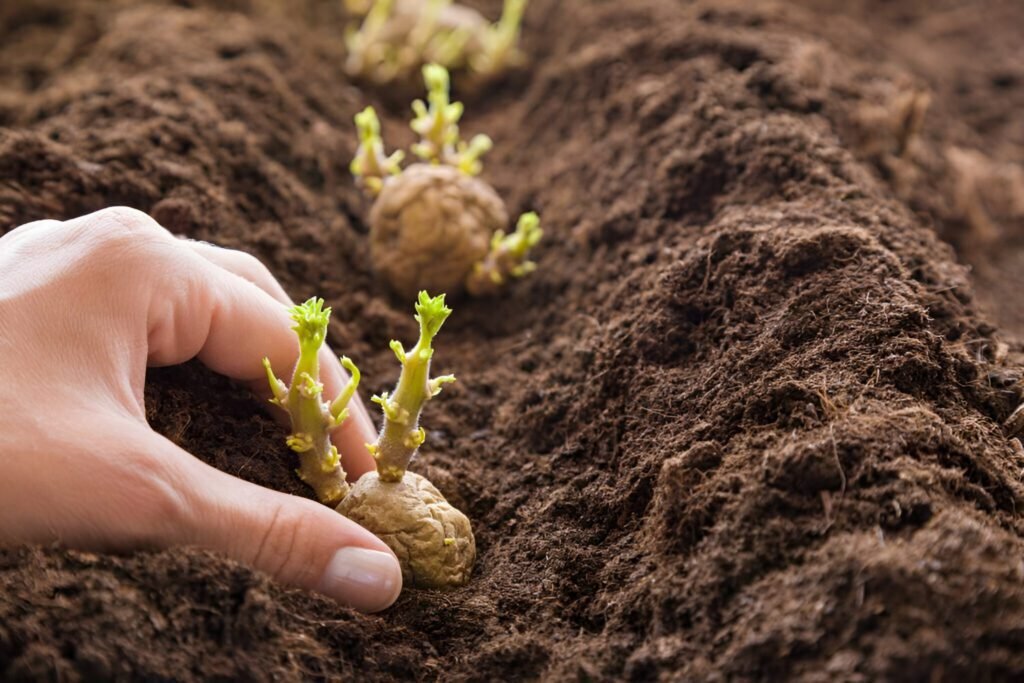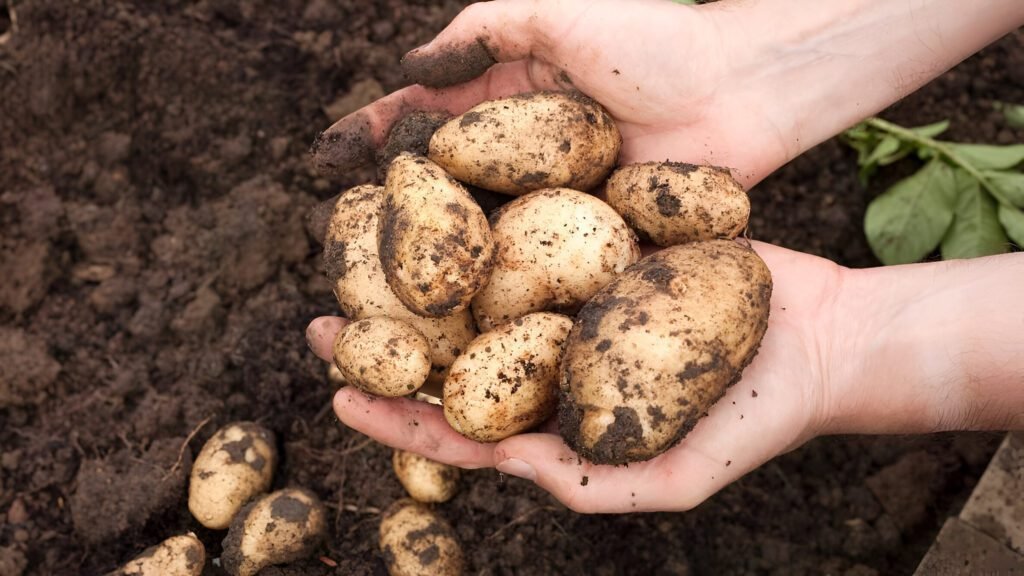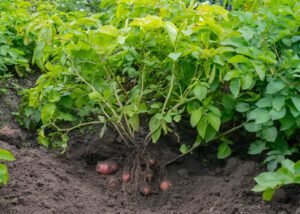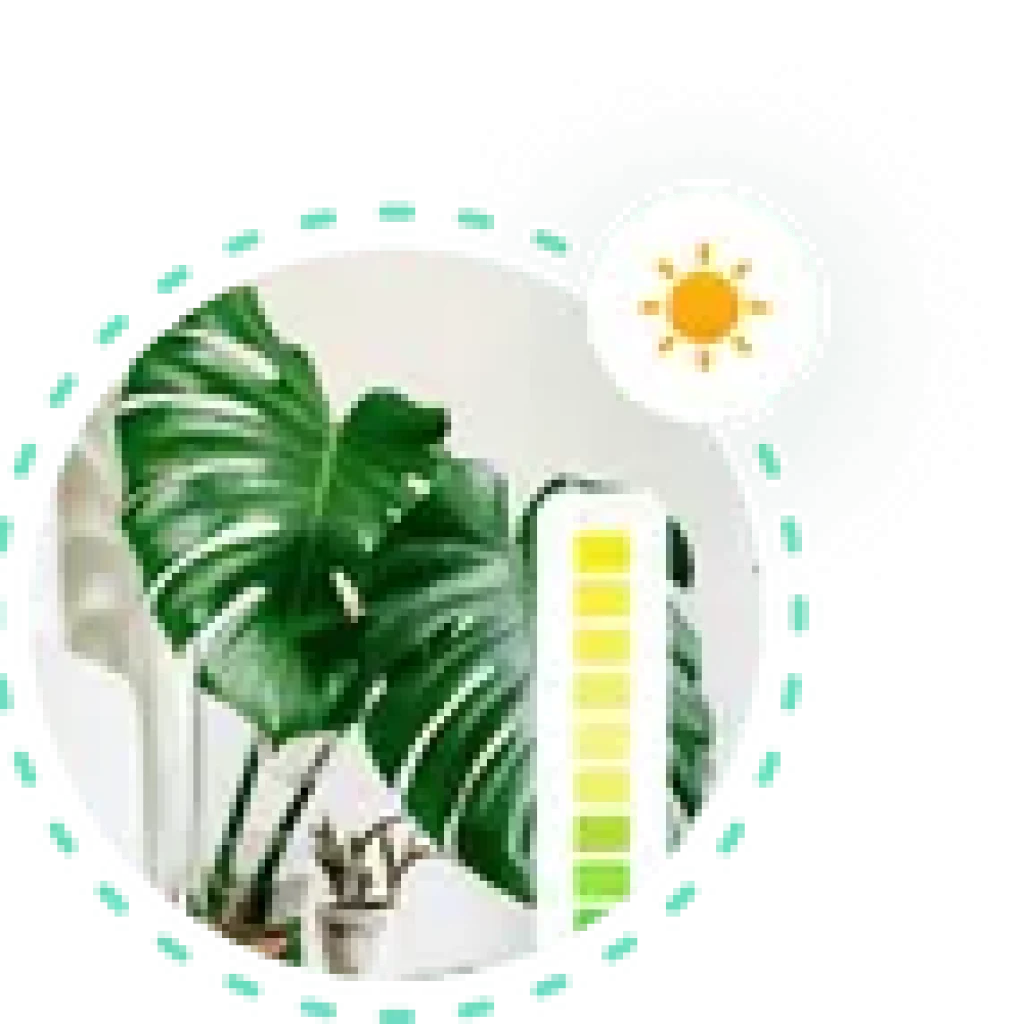Potato: definition, how to grow it, diseases, care for it
Introduction to potatoes
A traditional staple vegetable on the plot, potatoes are easy and fun to grow.
- Potatoes contain antioxidants, as well as vitamins and minerals, including vitamin C, B6 and potassium, which can help with heart and digestive health.

Basic care guide
- Russets are classic “Idaho” potatoes with a thick brown skin, often used for frying and mashing.
- Yellow potatoes are all-purpose potatoes that are perfect for mashing, boiling, roasting and frying
- Red potatoes are firm and excellent for salads and preparing gratins, scallops, and slaws.
- White potatoes are low in starch
- “Finger potatoes” are the size and shape of a finger. Due to their small size and different skin tones, they are ideal as side dishes. Most have a fairly mild nutty flavour.
- Original country:
Potatoes were brought to Europe by Spanish conquistadors in the early 16th century, were introduced to Britain and Ireland soon after, and then crossed the Atlantic again to reach North America in the early 18th century
- Nickname:
The word “potato” is taken from the Spanish word patata. The origin of the Spanish word goes back to the local languages of the Caribbean and the Andes.
Platoon Nightshade

The amount of water needed
- Crop water requirements for a 120 to 150 day crop range from 500 to 700 mm, depending on climate.
- Water requirements of potato plants are generally lower during the early stages of plant growth and gradually increase during maturity and later stages of tuber development.
- For winter farming, many farmers irrigate twice a week (depending on rainfall), while during drought they usually irrigate more frequently.
- In sandy soils, growers must irrigate more frequently than in heavy soils.
- It is important that the soil remains moist at all times. To improve productivity, total available soil water should not be depleted by more than 30 to 50%.
- Keep in mind that overwatering leads to erosion, disease susceptibility, water loss, additional energy costs for pumping, nitrogen leaching, and reduced crop yields. On the other hand, plants suffering from water stress are more susceptible to disease
Suitable living conditions
- Potatoes require cool — not freezing, not hot — weather to survive and produce edible tubers underground.
- Young shoots are susceptible to frost damage in April and May
- Temperatures range from 45 to 86 degrees Fahrenheit, but optimal growth is at about 68 to 77 degrees Fahrenheit.
Suitable lighting for him:
It needs prolonged exposure to sunlight every day, which promotes vigorous growth
– Exposure to insufficient or excess sunlight can result in less than optimal growth
- Well-drained soil
- For clay soil, add compost to improve drainage and prevent waterlogged soil, which leads to potato rot.
- Heavier tubers form when the soil temperature is in the 60-70 degree range, and stop when the soil temperature reaches 80 degrees or so.
- Mulching the soil with straw or other organic material can help reduce soil temperature by up to 10 degrees.
- Deep plowing and rock removal are necessary before planting seed potatoes


Find out what light your plants are actually getting.
Find the best locations for them to improve their health, simply using your phone.
Fertilization care
- As a general rule, potato plants need more nitrogen (NPK 34-0-0) during the first two months (when the leafy part of the plant develops quickly). From the second month until two weeks before harvest, plants need more potassium (12-12-17 or 14-7-21) in order to develop well-shaped potatoes.
- As a general rule, potato plants need more nitrogen (NPK 34-0-0) during the first two months (when the leafy part of the plant develops quickly). From the second month until two weeks before harvest, plants need more potassium (12-12-17 or 14-7-21) in order to develop well-shaped potatoes.
How to plant seeds
- Cut the potatoes into smaller pieces, making sure to leave at least one eye bud per piece. In general, we can cut larger potato tubers (diameter > 45 mm), while smaller ones are planted whole.
- We leave the potato seed pieces in a dry place for two days. After that, we will usually be able to see a peel on the surface of the potatoes we cut. At this point, we are ready to plant
- We first dig a trench (or canal) 4-6 inches (10-15 cm) deep. The length of the trench depends on the amount of seed potatoes we have. The next trench should be at least 28 inches (70 cm) from the first trench.
- Place the clusters (cuts) of potatoes inside the trench at least 10 inches (25 cm) apart from each other. Then we level our field by covering the trenches with soil.
- At this point, we must “ground” our crops by creating mounds. We do this, because planting potatoes on a flat surface will not help our potato plants thrive and produce a good crop.
- About two months after planting, we will naturally see healthy and well-developed potato plants. At that time, we may have to level our crops again, to prevent any potatoes from reaching the surface and being exposed to the sun. If exposed to sunlight, potatoes are likely to turn green and become unfit for human consumption
Pruning
Potatoes do not need pruning.
- Aphids and whiteflies are small sap-sucking insects that can cause potato plant leaves to yellow or discolor. These insects can also transmit harmful plant viruses (as soon as you notice aphids or whiteflies, spray the plants well every 5-7 days with a suitable insecticide. It is important to spray both sides of the foliage, as aphids and whiteflies usually hide on the underside of the foliage. Papers.
- Potato moth larvae chew leaves and stems and also chew potato tubers. As soon as you notice the larvae (or damage and droppings), spray the plants every 5-7 days with a suitable insecticide.
- 28-spotted ladybugs are orange-colored ladybugs (with 28 black spots). Unlike the beneficial ladybirds we encourage in our gardens, the 28-spotted ladybug leaves are chewy. Both adults and larvae of this species quickly defoliate potato leaves. To help control weevils and beetles, simply pick the pests off the plant as you see them, then crush them underfoot.

Suggested use
- Potatoes are often served whole or mashed as a cooked vegetable. They are also ground to make potato flour, which is used in baking, and for sauces.
- Glass cleaner : Cut a potato in half, and rub the potato in a circular motion on the surface of the glass until it is covered with a layer of starch. Next, spray water on the glass, then wipe the surface with a towel.
- Potato peels are rich in nutrients and can also help the soil retain moisture
- To reduce puffiness around the eyes and reduce dark circles, place potato slices on the eyes.
- Use boiled potato water to polish silver.
Suitable planting time
Planting time varies depending on the weather:
- Potatoes are planted in the spring in all regions, and again in the fall in temperate climates
additional information
- Plant height
The plant can reach 20 inches (50 cm) in height.
- Flowering stage
- The first shoots appear 3 weeks after planting in favorable conditions.
- Tuber growth stage (tuber enlargement): In the beginning, the tubers grow slowly and then accelerate after 70 days of planting.
- Fruiting stage
Early varieties in June and July
Late Varieties: Late August through October
With early bloomers, wait until the flowers open or fall



